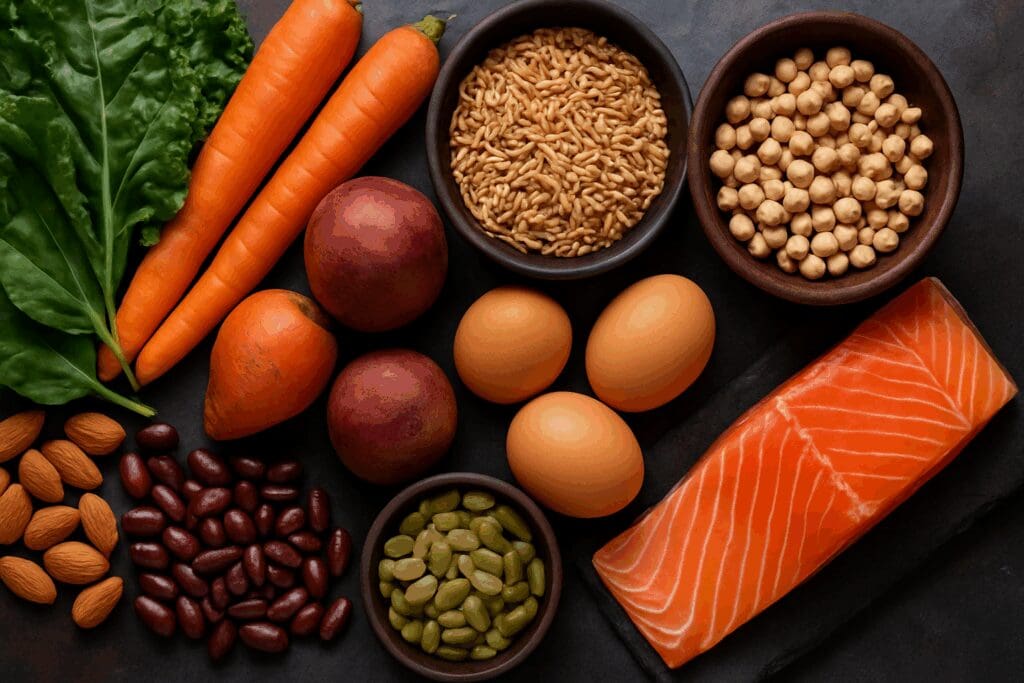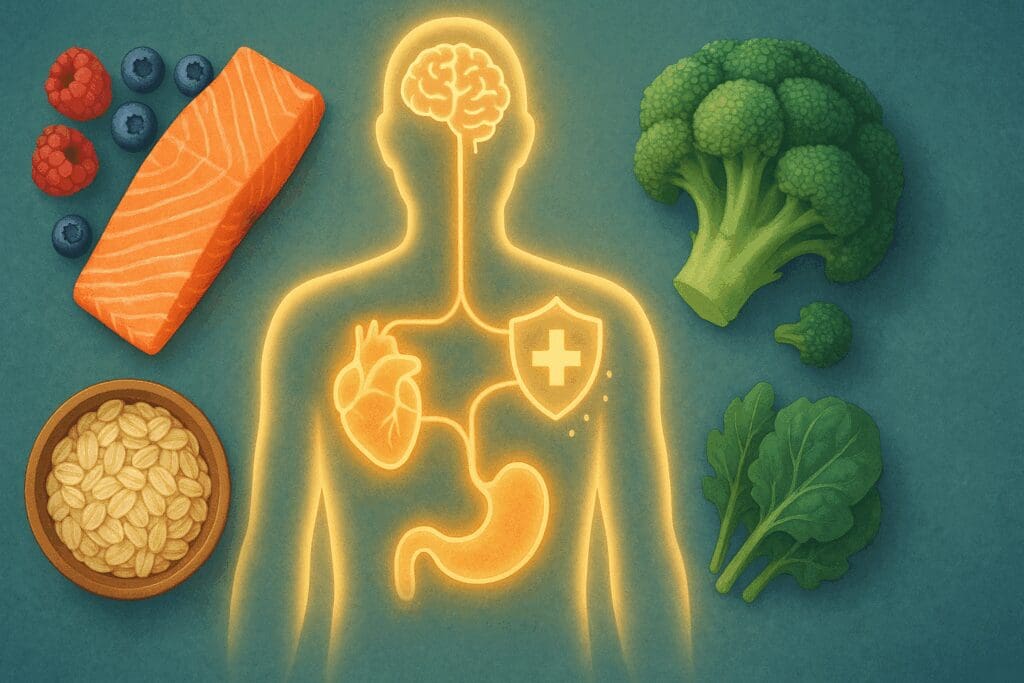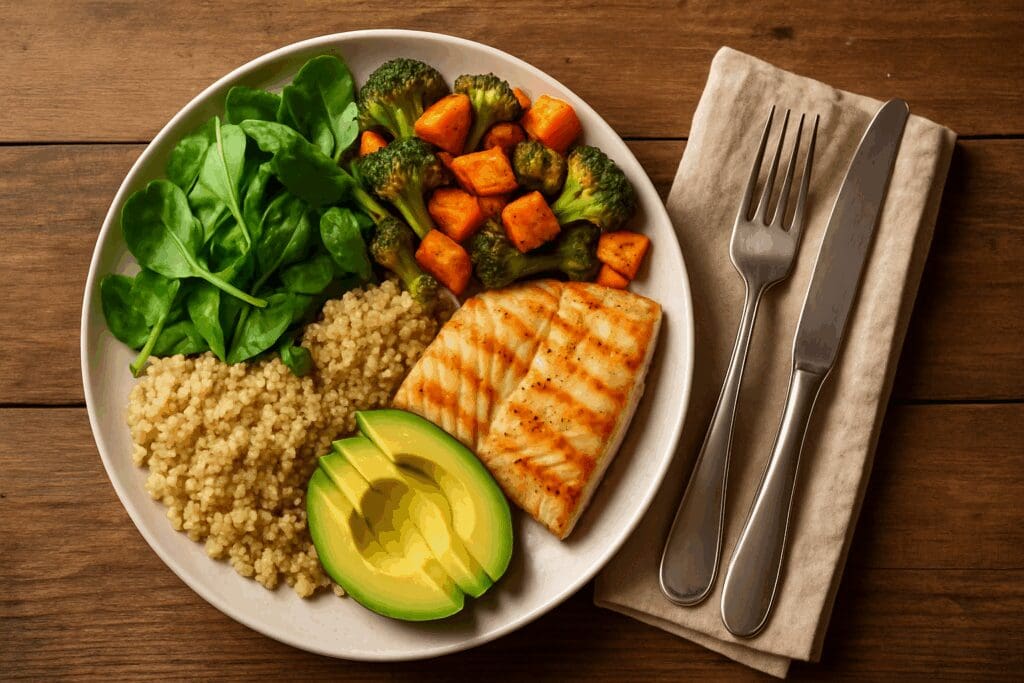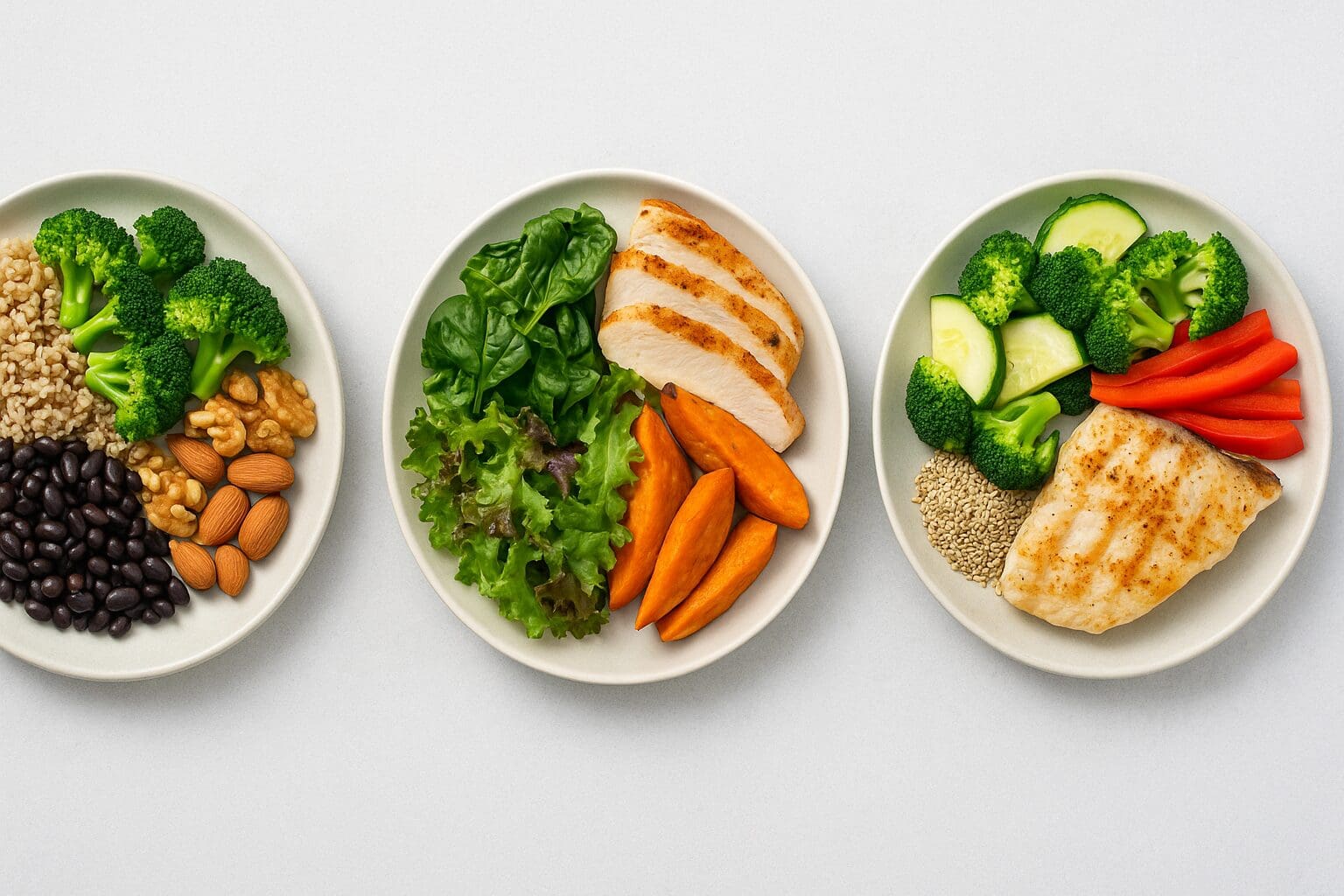In an era marked by increasing reliance on convenience and ultra-processed foods, many individuals are turning to more natural eating practices to restore vitality, prevent chronic disease, and elevate overall health. A thoughtfully designed whole food diet meal plan offers a sustainable, evidence-based strategy for achieving these goals by prioritizing nutrient-rich, unrefined ingredients in their most natural state. Unlike fad diets that promote rapid results at the expense of health or enjoyment, a whole food approach cultivates long-term wellness by focusing on quality, simplicity, and balance. For those seeking lasting energy and resilience against lifestyle-related conditions, adopting a whole food diet represents not just a dietary choice but a profound lifestyle transformation.
Whole foods—fruits, vegetables, legumes, whole grains, nuts, seeds, lean meats, and seafood—are free from artificial additives and refined sugars, delivering essential nutrients in their most bioavailable form. Integrating these into daily meals can stabilize blood sugar, improve digestion, enhance mental clarity, and support metabolic function. As part of a clean diet philosophy, this approach also avoids synthetic chemicals, promoting a more natural relationship with food. Whether you’re new to this path or refining an existing routine, this guide will empower you to develop a personalized whole food diet meal plan that supports your health, honors your lifestyle, and fuels every stage of your day with purpose and intention.
You may also like: 10 Essential Tips on Choosing Healthy Food for Ladies to Boost Energy and Wellness

Understanding Whole Foods: The Core of a Clean Eating Lifestyle
The term “whole foods” refers to ingredients that remain as close as possible to their original, unaltered state. These are foods that haven’t been stripped of their fiber, vitamins, or antioxidants, and contain no synthetic preservatives, added sugars, or hydrogenated oils. They include staples like leafy greens, root vegetables, lentils, ancient grains, berries, eggs, and wild-caught fish. A whole food diet list is a robust, varied catalog of nature’s most potent sources of nutrition, and offers the foundation for an unprocessed food diet.
Whole food eating for beginners starts with a simple concept: prioritize what grows from the earth or comes from animals raised in humane, low-intervention environments. This is not about rigid exclusion but about abundance—the abundance of nutrients, flavors, and textures found in natural foods. Incorporating this philosophy into your daily meals can result in profound changes in energy levels, sleep quality, mood stability, and even the body’s inflammatory response.
In contrast, processed foods often contain inflammatory seed oils, refined sugars, artificial dyes, and preservatives that may disrupt hormonal balance, gut health, and cardiovascular wellness. A no processed food diet mitigates these risks, enabling your body to function more efficiently by reducing its toxic burden. Whether you’re transitioning from a standard diet or simply refining your habits, starting with a clean eating food list that emphasizes minimally processed options helps build a sustainable meal structure rooted in vitality.

The Science-Backed Benefits of a Whole Food Diet Meal Plan
Clinical and epidemiological studies have long confirmed the benefits of diets rich in whole, unprocessed foods. These dietary patterns are associated with lower rates of obesity, type 2 diabetes, cardiovascular disease, and certain cancers. This is because whole foods tend to be high in dietary fiber, antioxidants, healthy fats, and phytonutrients, which work synergistically to reduce oxidative stress, stabilize insulin response, and nourish the microbiome.
Fiber, found in whole grains, fruits, and legumes, plays a crucial role in satiety, weight management, and digestive health. It feeds beneficial gut bacteria, which in turn produce short-chain fatty acids that lower inflammation and protect the colon. Healthy fats from avocados, nuts, and olive oil support brain function and hormone production, while lean proteins provide the amino acids necessary for tissue repair, immune support, and muscle synthesis.
Perhaps one of the most celebrated benefits of a whole food diet meal plan is sustained energy. Unlike processed meals that trigger blood sugar spikes and subsequent crashes, whole food meals provide a steady release of glucose into the bloodstream. This helps avoid the midday energy slump that plagues many individuals on a high-sugar, low-fiber diet. The cleanest diet is one that supports not just physical function but also mental clarity and emotional stability—qualities that are essential in today’s demanding world.

Whole Food Diet Meal Plan Essentials: What to Eat and Why
Developing a successful whole foods diet plan begins with identifying key food groups and understanding how they contribute to overall health. Fruits and vegetables should form the cornerstone of your plate, ideally making up at least half of each meal. These are rich in fiber, water, vitamins, and antioxidants that support detoxification, reduce inflammation, and feed cellular regeneration. A whole food diet food list often includes diverse options like dark leafy greens, cruciferous vegetables, root vegetables, and colorful fruits, which offer unique phytonutrients.
Whole grains, such as quinoa, brown rice, farro, barley, and millet, are superior to refined grains in both flavor and function. They preserve the bran and germ, which are rich in B vitamins, magnesium, and dietary fiber. Including these in your meal plan supports energy metabolism, gut health, and satiety. Legumes like lentils, chickpeas, black beans, and split peas are excellent sources of plant-based protein, iron, and folate, and they pair beautifully with grains to form complete proteins.
Clean foods also include high-quality animal products such as pasture-raised eggs, grass-fed beef, wild-caught salmon, and organic poultry. These provide bioavailable forms of vitamin B12, heme iron, zinc, and omega-3 fatty acids—all essential for cognitive function, mood regulation, and immune strength. Dairy products should be minimally processed, with plain, unsweetened options like Greek yogurt, kefir, or raw cheese being preferable for those who tolerate lactose. For those pursuing plant-based clean eating, fermented soy products, hemp seeds, and fortified nut milks offer viable alternatives.

Building Your Whole Food Diet Meal Plan for All-Day Energy
Designing a whole food diet meal plan for consistent energy and optimal wellness requires attention to macronutrient balance, meal timing, and food variety. Begin by structuring meals around a trio of complex carbohydrates, healthy fats, and clean proteins. This formula helps regulate blood sugar, supports metabolic function, and sustains mental focus from breakfast to dinner.
For breakfast, opt for a fiber-rich grain like steel-cut oats topped with berries, chia seeds, and almond butter. This combination offers slow-releasing carbohydrates, antioxidants, and healthy fats that fuel your morning without causing spikes in blood sugar. Alternatively, a protein-packed option such as eggs with sautéed spinach and avocado provides satiety and hormonal support. Lunch can include quinoa or farro tossed with arugula, roasted vegetables, chickpeas, and a tahini dressing, delivering a satisfying blend of fiber, plant protein, and essential minerals.
Dinner should be lighter on grains and higher in vegetables and protein, such as grilled salmon with steamed broccoli and sweet potato or a lentil stew served with fermented vegetables and herbs. This meal pattern enhances digestion and sleep quality, which are intimately tied to next-day energy levels. For snacks, choose clean foods like apple slices with nut butter, boiled eggs, or a handful of almonds—choices that align with the principles of simple clean eating while providing nourishment between meals.
Incorporating a natural foods diet also means being mindful of hydration. Herbal teas, filtered water, and mineral broths keep cells hydrated and aid in detoxification. By aligning your eating schedule and food choices with your body’s rhythms and needs, a whole food meal plan becomes a tool for steady vitality, not just a list of ingredients.
Whole Food Eating for Beginners: Practical Steps to Get Started
Transitioning into a whole food lifestyle doesn’t have to be overwhelming. Whole food eating for beginners can begin with a few simple strategies that gradually become second nature. The first step is reading ingredient labels carefully. Even items marketed as “natural” or “healthy” may contain hidden sugars, preservatives, or seed oils. Choose items with minimal ingredients—ideally, five or fewer—and ensure you can recognize each one.
Start by crowding out rather than cutting out. Incorporate more whole foods into your current diet instead of fixating on restriction. For example, add a side of steamed vegetables to your pasta dish or substitute white rice with quinoa or wild rice. As your body adjusts, processed options will naturally become less appealing as your palate becomes attuned to the richer flavors and textures of real food.
Meal prepping is a cornerstone habit that supports a successful transition. Cooking large batches of grains, roasting a tray of vegetables, and preparing homemade sauces in advance can turn chaotic mealtimes into moments of calm and creativity. This method also aligns with how to start eating clean while saving time, reducing waste, and promoting consistency.
Lastly, it’s essential to approach the change with flexibility and self-compassion. Mistakes and indulgences are not failures but opportunities to observe your body’s response and recalibrate. A clean diet is not about perfection—it’s about progression. Over time, as you build your routine and discover the foods that make you feel your best, your clean eating food list will become a reflection of personal empowerment and nutritional wisdom.

The Role of a Whole Food Diet in Hormonal and Immune Health
A growing body of research illustrates the connection between diet and endocrine function. A whole food diet meal plan, rich in essential fatty acids, phytonutrients, and fiber, supports hormonal regulation by influencing gut health, liver detoxification, and insulin sensitivity. These are critical mechanisms for achieving balance across estrogen, progesterone, cortisol, and thyroid hormones—especially in women facing PMS, PCOS, or perimenopausal shifts.
Cruciferous vegetables like broccoli, cauliflower, and bok choy contain glucosinolates that support liver enzymes responsible for metabolizing estrogen, helping to reduce the risk of hormone-driven conditions. Seeds such as flax and pumpkin offer lignans and zinc, respectively, which can modulate hormonal fluctuations naturally. Healthy fats, particularly omega-3s from walnuts, chia seeds, and salmon, are the building blocks for hormone synthesis and cellular signaling.
Immunity is also enhanced by a clean, unprocessed food diet. The gut microbiome, which houses a large portion of the immune system, thrives on dietary fiber and fermented foods. A robust gut flora helps maintain intestinal integrity, preventing the translocation of pathogens and reducing systemic inflammation. Vitamins A, C, D, and E—all abundant in whole foods—play crucial roles in immune modulation, wound healing, and defense against oxidative stress.
By choosing nutrient-dense foods over refined ones, you’re not only feeding your immediate hunger but also empowering your immune and hormonal systems to operate efficiently. This synergy underscores why the whole food diet stands out as one of the cleanest diet approaches available—it nourishes deeply, comprehensively, and holistically.

Customizing a Whole Foods Diet Plan for Individual Needs
While the benefits of a whole food lifestyle are universal, the application must be individualized. A whole foods diet plan can be adjusted for specific health conditions, fitness goals, food intolerances, or ethical values. For instance, someone following a plant-based diet may rely more heavily on legumes, grains, and seeds, while a paleo-aligned individual might emphasize grass-fed meats, tubers, and non-grain carbohydrates.
Athletes or those with high physical demands might require larger portions of complex carbs and protein to support performance and recovery. Those managing insulin resistance or prediabetes may benefit from a lower-glycemic approach that emphasizes leafy greens, cruciferous vegetables, lean protein, and minimal fruit. Similarly, individuals with autoimmune conditions might explore elimination protocols within the whole food framework to identify inflammatory triggers.
A clean diet should also reflect cultural preferences and culinary joy. Whether it’s incorporating spices from your heritage, enjoying seasonal produce from your region, or honoring family traditions, a personalized whole food diet list should be as emotionally nourishing as it is physically beneficial. The goal is not to impose external standards but to empower internal alignment with your values, rhythms, and needs.
Working with a registered dietitian or nutritionist can offer additional insight, especially when navigating complex health issues or fitness regimens. A personalized whole food diet meal plan becomes a long-term ally when it is adaptable, enjoyable, and informed by both evidence and lived experience.
Clearing Food Confusion: Making Sense of Clean Eating Labels
In the modern marketplace, food marketing can be deceptive. Terms like “natural,” “healthy,” “organic,” and “clean” are frequently used without standard definitions, leading to consumer confusion. Clearing food myths and understanding what truly constitutes a whole food requires both education and vigilance. While clean eating has become a popular buzzword, it’s important to distinguish between marketing and authenticity.
A whole food diet relies on foods that are minimally processed, with little to no alteration from their original state. This differs from “natural” products that may still contain additives or from “low-fat” items that are often high in sugar. Reading nutrition labels, understanding ingredient sourcing, and buying directly from farmers or trusted suppliers are effective strategies for simplifying your choices and avoiding healthwashing.
Knowing how to eat clean for beginners includes learning which certifications matter. Labels like USDA Organic, Non-GMO Project Verified, or Certified Humane provide more reliable indicators than vague claims. Still, the cleanest diet often prioritizes local, seasonal, and homemade food over even the best-packaged products. For example, a homemade soup from bone broth and fresh vegetables surpasses any shelf-stable “natural” alternative in both nutrition and integrity.
The goal of a whole food approach is not rigidity but clarity. By gaining confidence in your food sourcing and preparation, you reduce stress and make each meal a moment of nourishment and trust. This deep sense of alignment—knowing where your food comes from and what it contains—is one of the most empowering aspects of a clean, whole food lifestyle.
Long-Term Sustainability and the Joy of Eating Whole
A vital but often overlooked aspect of any meal plan is sustainability—not only in the environmental sense, but in terms of personal consistency and emotional well-being. A whole food diet meal plan, when constructed with variety and pleasure in mind, becomes more than a nutritional protocol; it becomes a deeply satisfying way of life.
Unlike restrictive fad diets that often lead to burnout or binge cycles, whole food eating embraces abundance. There is no need to fear food groups or count calories obsessively. Instead, emphasis is placed on flavor, freshness, and function. Over time, the body begins to crave nourishment over stimulation, and processed foods lose their appeal. This transformation doesn’t come from willpower, but from attunement.
Cooking becomes a joyful ritual rather than a chore. Farmers’ markets, gardening, batch-prepping, and experimenting with herbs and spices transform meals into expressions of care and creativity. Eating in alignment with the seasons reconnects you with nature’s rhythms and your own biology. A clean eating food list becomes a guide, not a cage—pointing you toward wholeness, not perfection.
Moreover, clean eating fosters community. Sharing a home-cooked whole food meal builds bonds, honors tradition, and provides emotional nourishment. When viewed through this expansive lens, a whole foods diet plan becomes not only sustainable but soul-sustaining. It provides the energy, clarity, and joy required to live fully, intentionally, and in radiant health.
Frequently Asked Questions About Following a Whole Food Diet Meal Plan
1. What are the lesser-known benefits of adopting a whole food diet meal plan?
A whole food diet meal plan does more than improve digestion and aid weight loss—it actively supports your immune system, reduces inflammation, and enhances cognitive function. Because it emphasizes unprocessed ingredients, you’re consistently feeding your body the vitamins, minerals, and antioxidants needed to repair cellular damage. The cleanest diet, especially when focused on natural foods, reduces your exposure to preservatives and chemicals that may disrupt hormones. Over time, many individuals report improvements in sleep, mental clarity, and skin health when committing to a no processed food diet. These holistic benefits are why whole food eating for beginners often evolves into a permanent lifestyle change.
2. How does a whole food diet meal plan differ from other clean eating strategies?
While all clean diets aim to minimize processed ingredients, a whole food diet meal plan prioritizes foods in their most natural, untouched forms—think raw fruits, unrefined grains, and legumes in their full-fiber shells. A clean diet may still allow some minimally processed items like whole-grain pasta or unsweetened almond milk, but the whole food diet food list avoids even those. This distinction helps preserve the natural synergy of nutrients found in foods, enhancing bioavailability and digestive efficiency. Additionally, the whole food diet list avoids shortcuts like protein bars or meal replacements common in other dietary programs. The focus is on simplicity, sustainability, and deep nourishment.
3. What are the biggest obstacles beginners face with whole food eating, and how can they overcome them?
One of the main challenges for whole food eating for beginners is managing the initial time investment—chopping, soaking, and cooking from scratch can feel overwhelming. However, meal prepping with a weekly whole foods diet plan and creating a versatile clean eating food list can ease the transition. Another common issue is food boredom; incorporating global cuisines into your simple clean eating rotation can reignite culinary excitement. For those transitioning from a heavily processed lifestyle, digestive discomfort is normal at first—hydration and gradual fiber increases help ease this. Above all, mindset matters: reframing clean foods as tools for healing rather than restrictions builds long-term commitment.
4. How can you create a whole food diet meal plan that fits a busy lifestyle?
Time-saving strategies make a whole food diet meal plan manageable for even the busiest schedules. Start by preparing ingredients in bulk—grains, roasted vegetables, and legumes can be refrigerated or frozen for quick assembly. A clean eating food list filled with low-prep options like baby carrots, bananas, canned beans, and frozen organic vegetables ensures you always have something nourishing on hand. Batch cooking on weekends and using a rotating weekly whole food diet list prevent decision fatigue. With planning, clean foods become just as convenient as processed ones, minus the health trade-offs.
5. How do you know if a food qualifies for the whole food diet food list?
A good rule of thumb for the whole food diet food list is: the fewer ingredients and the closer to its original form, the better. Whole fruits, vegetables, nuts, seeds, unrefined grains, and fresh animal products all fit this description. When evaluating packaged goods, stick to items with one to three recognizable ingredients and no preservatives. Clean foods shouldn’t require a label to understand what they are—if it needs translation, it likely doesn’t belong in a natural foods diet. This clarity helps you filter out deceptive marketing and stick to an unprocessed food diet with confidence.
6. What is the most effective way to transition into a no processed food diet?
Transitioning into a no processed food diet is most sustainable when approached incrementally. Begin by swapping out highly processed staples—like sugary cereals or packaged snacks—for clean foods from a trusted whole food diet list. Each week, replace one processed item with a whole alternative, like brown rice instead of white rice or fresh fruit instead of granola bars. Learning how to start eating clean also involves examining emotional ties to convenience foods and finding satisfying replacements. Eventually, your palate will adjust, and the craving for artificial flavors will diminish as your body learns to appreciate whole food flavors.
7. What role does meal planning play in maintaining a cleanest diet?
Meal planning is essential for staying consistent with the cleanest diet because it eliminates last-minute decisions that often lead to processed choices. Using a whole foods diet plan as your blueprint, you can shop with purpose and avoid impulse buys that derail progress. Planning also helps ensure variety, which keeps your natural foods diet nutritionally balanced and exciting. Having a stocked pantry of whole food staples—like oats, quinoa, lentils, and clean proteins—reduces dependency on takeout or quick fixes. By committing to a weekly whole food diet meal plan, you’re making your health goals easier to achieve day by day.
8. How can families or households shift together toward a simple clean eating routine?
Introducing a family to a simple clean eating lifestyle starts with collaboration and flexibility. Rather than overhauling everyone’s diet overnight, begin by adding more clean foods to shared meals—like offering roasted sweet potatoes instead of fries or preparing a big salad as a side. Involving kids in choosing ingredients from the clean eating food list empowers them and makes them more likely to try new dishes. Designating one or two nights a week as “whole food nights” helps the household gradually embrace the change. Over time, shared commitment and creativity can make the unprocessed food diet feel inclusive rather than restrictive.
9. How does a natural foods diet support mental and emotional health?
A natural foods diet reduces exposure to additives and preservatives that may interfere with neurotransmitter production and hormone regulation. Clean foods like leafy greens, fatty fish, and berries are rich in compounds that promote dopamine and serotonin balance. Additionally, the act of meal prepping and following a consistent whole food diet meal plan fosters routine, which can alleviate anxiety and decision fatigue. Gut-brain research increasingly links the unprocessed food diet with reduced symptoms of depression and brain fog. Mental clarity, mood stability, and emotional resilience are often overlooked—but powerful—benefits of whole food eating.
10. What does long-term success look like with a whole food diet meal plan?
Success with a whole food diet meal plan isn’t measured solely by weight loss but by enhanced energy, reduced illness, and greater connection to food. Over time, people report better digestion, fewer cravings, and deeper satisfaction with meals rooted in a whole foods diet plan. As you refine your whole food diet list, meals become quicker to assemble and tailored to your preferences. Clean eating evolves from something you “do” into a way you live—sustainably, joyfully, and consciously. The goal isn’t perfection but alignment: fueling your body with the cleanest diet that honors both health and pleasure.
Conclusion: Why a Whole Food Diet Meal Plan Is the Key to Energy and Wellness
As modern life continues to accelerate, the need for clarity, simplicity, and authenticity in nutrition has never been greater. The whole food diet meal plan offers a powerful response to this need—not as a trend, but as a timeless and evidence-backed solution for sustained energy, disease prevention, and holistic well-being. By emphasizing clean, natural ingredients in their most nutritious form, this approach reconnects us to the wisdom of traditional eating while harnessing the science of modern health.
Whether you’re beginning your journey with whole food eating for beginners or refining an advanced nutrition protocol, the key to success lies in personalization, consistency, and joy. A whole food lifestyle is not about restriction but liberation—from processed ingredients, from confusing labels, and from the ups and downs of unstable blood sugar and unsatisfying meals. It empowers you to nourish your body in alignment with its needs, support hormonal and immune health, and cultivate resilience from the inside out.
In embracing the cleanest diet grounded in whole foods, you’re investing in your long-term vitality. You’re not simply eating—you’re healing, energizing, and celebrating the profound relationship between food and well-being. Let your plate reflect your purpose, your values, and your vision for a vibrant, sustainable life. That is the essence of a whole food diet meal plan—and its power is yours to harness, every single day.
Further Reading:
Clean eating: What does that mean?
Clean-Eating Meal Plan for Beginners, Created by a Dietitian



